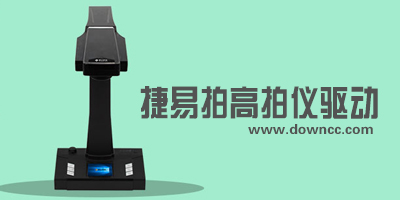
捷易拍高拍仪驱动软件其实就是捷宇驱动!提供有新版、旧版驱动软件。包括:捷易拍a4500z、捷易拍a4500d、捷易拍a4300、捷易拍a4500、捷易拍jyp5003、捷易拍jyp5004、捷易拍t200d等驱动程序。绿色资源网小编同时提供了新版捷宇高拍仪驱动应用,可以帮助用户解决高拍仪扫描异常问题,让你完美体验捷易拍产品的所有拍摄功能,欢迎大家下载使用。
31.58M / 2016-06-21 / 官方版
捷易拍a4500z驱动是配套a4500z高拍仪产品使用的扫描仪驱动安装程序。安装好驱动软件后,用户就可以体验实物拍摄、书籍翻拍等功能。欢迎在绿色资源网下载使用。产品介绍捷易拍a4500z是一款便捷式高速多功能拍摄仪,无
31.58M / 2016-06-21 / v4.0.51215 官方版
捷易拍a4500d驱动是由捷宇智汇星官网推出的扫描仪驱动安装软件。如果您在使用捷易拍a4500d时遇到无法正常安装的问题,就可以利用这款驱动可以快速安装上高拍仪设备。欢迎在绿色资源网下载。 产品参数型号:A4-500D
31.58M / 2016-06-21 / 官方版
捷易拍a4300驱动是一款高速精拍仪驱动安装程序。主要帮助用户解决无法正常使用高拍仪设备的难题。安装该驱动后,就可以体验捷易拍a4300高拍仪设备的完美扫描功能。快来绿色资源网下载吧。 规格参数型号:A4-300Z 产
31.58M / 2016-06-21 / 官方版
捷易拍a4500驱动是一款免费的高拍仪驱动软件。主要为了解决用户在高拍仪设备完好的情况下无法正常使用该产品的问题。应网友们的搜索需求,绿色资源网小编为大家提供了该驱动下载地址。欢迎光临本站! 捷易拍A4-500产
31.58M / 2017-03-01 / v4.0.51215 官方版
捷易拍jyp5003驱动是配合jyp5003高拍仪产品设备使用的扫描仪驱动安装程序。在使用文件拍摄仪过程中如果遇到了拍摄成像模糊、扫描失败等问题,大家可以来本站下载jyp5003驱动解决下! 产品介绍捷易拍JYP5003,具备框
31.58M / 2017-03-01 / v4.0.51215 官方版
捷易拍jyp5004驱动软件由捷易拍官方推出的免费扫描仪驱动程序。由于捷易拍已经改名为捷宇,所以绿软小编提供的是新版驱动应用。可以同于解决高拍仪不能正常扫描的问题!欢迎大家下载使用。 JYP5004T产品简介:捷易拍
31.58M / 2017-03-01 / v4.0.51215 官方版
捷易拍t200高拍仪驱动可以在win7、XP、win8等主流计算机系统中运行安装。这款产品拥有非常良好的拍摄扫描性能,可以扫描文件、图书以及图像等介质,常被适用于教学行业授课使用!大家若需要这款驱动,可以来绿色资源
31.58M / 2017-03-01 / v4.0.51215 官方版
捷易拍a4200驱动是一款免费的扫描仪驱动软件。可以修复解决图像变黑或白屏、视频画面反应慢、拍摄镜头不清晰等问题。需要的网友可以来绿色资源网下载安装。产品介绍捷易拍A4-200Z,具备框选拍摄功能,可随意拍摄任意
31.58M / 2017-03-01 / v4.0.51215 官方版
捷易拍a4200d驱动是配合a4200d高拍仪设备使用的扫描仪驱动软件。如果电脑中少了这款驱动程序,就会出现图像扫描有阴影、扫描成像识别等。有需要的朋友欢迎下载使用。a4200d产品特点支持证件双面拍摄后合并为一张图像
30.87M / 2015-11-06 / v4.0.51215 官方版
捷宇高拍仪应用程序是捷宇高拍仪的管理软件,小编还提供了其官方驱动程序,需要下载驱动的朋友安装对应的包后就可以了,欢迎下载使用。捷宇高拍仪软件介绍捷宇智汇星高拍仪应用软件是捷宇高拍仪配备的一款全新的影像
30.87M / 2016-07-27 / v4.0.51215 官方版
捷宇cg5012u驱动是由捷宇官方为该型号的高拍仪打造的驱动程序,有了它以后,用户就可以非常便捷的进行扫描工作了,欢迎有需要的朋友到绿色资源网下载使用! 捷宇高拍仪cg5012u特色1.快10倍 无需预热,快10倍 A3A4
89.74M / 2016-06-21 / v3.7.15.1230 官方版
捷宇教学助手软件是由捷宇官网推出的一款全新的视频教学应用。本软件能够完美支持智汇星全系列视频展台设备使用。借助于这款软件,用户可以链接上捷宇视频展台产品,实现远程视频教学功能。可适用于教育培训、网络授
30.87M / 2017-03-01 / v4.0.51215 官方版
捷宇jy5003tca文件拍摄仪驱动是专为jy5003tca高拍仪设备推出的驱动安装程序。可以有效解决文件拍摄仪无法正常拍摄、扫描的问题,这款产品具有高速、稳定的拍摄特点,能够适用于多个行业领域!需要的朋友欢迎下载使用